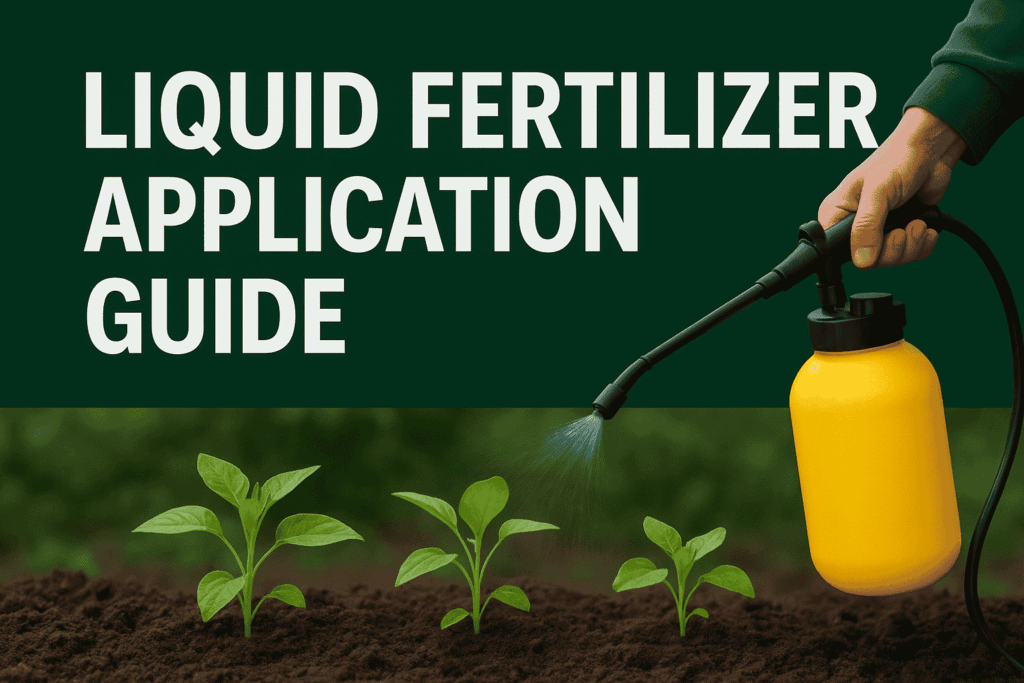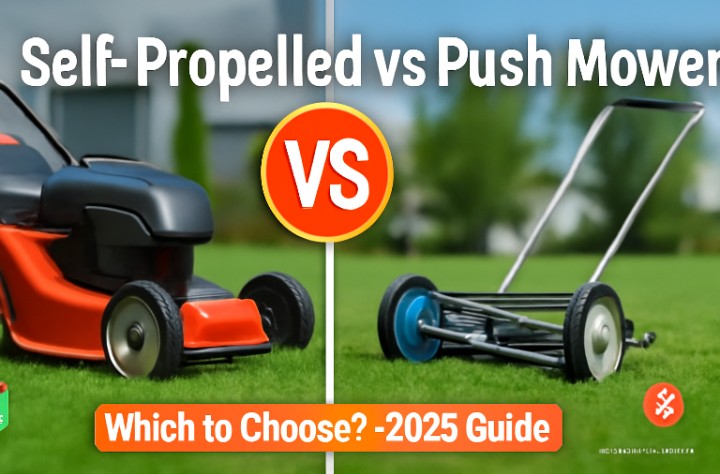My buddy Steve in Seattle could not figure out why his lawn looked terrible. Brown patches everywhere, neighbors giving him weird looks. Then he discovered liquid fertilizers. Total game changer.
Now Steve’s got the greenest lawn on the block. Want to know his secret?
Introduction to Liquid Fertilizers
What Are Liquid Fertilizers?
Think, you are mixing chocolate syrup into milk. That’s basically liquid fertilizer – nutrients already dissolved and ready to go. No waiting around for those chunky granules to break down. Plants can’t tell the difference between nutrients supplied by granular and liquid fertilizers, but they both have advantages depending on the farming application. The liquid stuff just gets there faster.
Maria, who runs a landscaping business in Phoenix, swears by liquid formulas. “My clients see results in days, not weeks,” she tells me. Two main types exist. Synthetic versions give you exact control over what your plants get. Organic options feed your soil’s beneficial microbes too.
Benefits of Liquid Fertilizers
Here’s the thing about liquid nutrition – it works fast. Really fast. Homeowners recognize the need for timely nutrient applications to promote vigorous plant growth in landscapes and gardens.
Your grass absorbs liquid nutrients within hours. Compare that to granular fertilizer sitting on top of soil for weeks. No contest.
Remember David from Las Vegas? His container garden was dying in the desert heat. Started using liquid feeding weekly. Now his tomatoes are the talk of the neighborhood.
Even coverage happens automatically with liquid application. No more streaky lawn patterns from those tricky spreaders. Your sprayer does the work evenly. Plus, less waste occurs. Plants grab what they need immediately instead of losing nutrients to runoff.
Common Uses
Every Western homeowner I know uses liquid feeding somewhere. Salt Lake City gardeners can not grow decent vegetables without it. The alkaline soil there demands frequent nutrition. Oregon greenhouse operations rely completely on liquid feeding systems. Indoor plants love the precision timing you get.
My neighbor in Spokane feeds his roses every two weeks with liquid fertilizer. Blooms all summer long now. Used to struggle with those heavy granular bags.
Lawn care becomes so much simpler too. Hook up that hose-end sprayer and you are done in minutes.
Types of Application Methods
Soil Application
Most feeding happens through roots anyway, so soil application makes sense. Mix your concentrate exactly like the label says. Don’t get creative here.
Watering can method works great for smaller areas. Pour slowly around plant bases. Keep it off the stems though – nutrients can burn tender tissue. Fluid fertilizers are easy to handle and use. Movement is by pump, and they usually require less labor to handle. That’s why busy homeowners love them.
Hose-end sprayers handle big lawns without breaking your back. Just walk at normal speed and let the sprayer do its thing.
Foliar Application
Sometimes plants need instant help. That’s when leaf feeding saves the day. Yellow leaves? Spray them directly and watch the magic happen.
Morning works best for foliar applications. Hot afternoon sun can literally fry wet leaves. Learned that lesson the hard way on my first roses.
Many gardeners wait 2 to 3 weeks after planting before fertilizing with liquid solutions; by then, the newly set-out plants should have recovered from any root damage. Smart thinking there.
Cover both sides of leaves when you can reach them. Lower surfaces actually absorb nutrients better than tops.
Root Zone Application
Trees need feeding at their drip line, not around the trunk. That’s where the feeder roots actually live and work.
Shrubs get circular feeding patterns extending past their branches. Deep root injection helps established plants that struggle with surface applications.
Focus where roots are actively growing. No point feeding dead soil areas.
Safety Precautions and Equipment
Personal Protective Equipment (PPE)
Safety first, even with “natural” stuff. Chemical exposure happens faster than you think during mixing. Eyes are super vulnerable to splashes. Safety glasses cost way less than emergency room visits. Trust me on this one.
Chemical-resistant gloves protect your hands during mixing and application. Nitrile or PVC work great for most liquid fertilizers. Long sleeves and pants might feel hot, but they prevent accidental skin contact. Synthetic fabrics resist absorption better than cotton.
Handling Safety
Read those product labels completely before opening anything. Supplying needed nutrients for crop production involves attention to four major fertilization factors (the 4Rs): right rate, right source, right placement, and right timing.
Keep kids and pets away during application time. Wait for everything to dry completely before they come back outside.
Never, ever transfer products to unmarked containers. Especially not food containers. Recipe for disaster right there. Original labeled containers prevent dangerous mix-ups later.
Application Equipment
Spray bottles handle houseplants and small garden spots perfectly. Get adjustable nozzles for different coverage patterns. Watering cans with fine-rose attachments distribute nutrition evenly. Choose rust-resistant materials – they last much longer.
Hose-end sprayers work great for lawns and large gardens. Polymer construction beats metal every
time for chemical resistance. Pump sprayers give you precision control when you need targeted feeding.
4. Reading Labels and Understanding Dilution
Label Information
Those N-P-K numbers show nitrogen, phosphorus, and potassium percentages. 20-20-20 blends work for almost everything. Higher concentration levels need more water for safe mixing. Math matters here – measure carefully.
Application rates change depending on what you are growing. Follow manufacturer recommendations first, then adjust based on results.
Dilution Basics
Measure accurately or risk damaging your plants. Use proper measuring tools, never guess concentrations.
Water quality affects how well nutrients dissolve and stay available. Hard water sometimes needs pH adjustment for best results.
Room temperature water mixes way better than cold water. Hot water can actually damage some liquid fertilizer formulations.
Mixing Procedures
Always add concentrate to water, never the other way around. This prevents clumping and gives you smooth consistency. Mix gently to avoid creating tons of foam. Vigorous mixing can mess up some organic components.
Clear solutions mean proper mixing without problems. Cloudy stuff might need different water.
5. Application Timing and Conditions
Best Times to Apply
Fertilize outdoor plants in the coolest part of the day, such as early morning or late evening, especially in hot summer weather. Louisiana State University research backs this up completely.
When it comes to fertilizing your houseplants, the morning is definitely the best time. Plants use nighttime to recover and grow roots.
Late afternoon works as backup timing when morning does not happen. Just avoid that brutal midday heat that stresses everything out.
Weather Considerations
Never apply during scorching hot days above 85°F. Avoid applying during midday heat (>30°C), as leaf scorch and volatilization of nutrients like nitrogen can occur.
Rain within 6-8 hours just washes foliar applications away. Check your weather app before mixing anything.
The best time of day to fertilize lawn is early morning or late afternoon, ensuring your grass can absorb nutrients without the risk of burning. Wind makes coverage uneven too.
Application Frequency
Growing plants need more frequent feeding. Spring growth especially demands regular nutrition schedules. Watch how your plants respond between feedings. Healthy growth means you’ve got timing and strength right.
Consistent soil moisture is important for nutrient uptake. If you are growing heavy feeders that are still producing in heat, remember to keep a consistent watering schedule. Summer might need weekly applications.
Step-by-Step Application Process
Pre-Application Preparation
Check your equipment before starting anything. Broken sprayers waste time and create uneven coverage. Test spray patterns on your driveway first. Adjust nozzles until you get the coverage width you want.
Measure your treatment area so you know how much product to mix. Prevents waste and ensures you have enough.
Application Technique
For Soil Application:
Dry soil needs light watering before you apply fertilizer. Moist soil helps nutrients move down to roots instead of running off.
Keep walking speed consistent for even coverage. Imagine you’re painting – smooth, steady motions work best.
Avoid getting fertilizer directly on plant stems. Focus nutrition in the root zone where it actually gets used.
For Foliar Application:
Spray until leaves look damp, never dripping wet. Too much just runs off and wastes product.
Hit both sides of leaves when possible. Bottom surfaces
often absorb nutrients better than tops.
Skip foliar feeding during flowering. Wet flowers invite disease problems you don’t want.
Post-Application Care
Always water in fertilizers well to distribute nutrients throughout the soil profile and to prevent burning. Light watering helps move nutrition down to roots.
Clean equipment right after every use. Fertilizer residue causes corrosion and clogs everything up.
Keep an eye on plant response over the next few days. Record what you did for future reference.
Application Rates and Coverage
Determining Application Rates
Start with what the manufacturer recommends. You can always adjust based on how your plants respond.
Small plants need weaker solutions in smaller amounts. Big established plants can handle stronger stuff.
Sandy soil drains fast, so you might need more frequent applications. Clay holds nutrients longer.
Coverage Guidelines
Measure your area before mixing solutions. Accurate math prevents waste and ensures you have enough product.
Even distribution prevents burning while making sure everything gets fed. Overlap your spray patterns slightly.
Walking speed consistency keeps coverage uniform. Practice on concrete until you get the rhythm down.
8. Storage and Handling
Proper Storage
Cool, dry places keep products working longer. Temperature swings mess with nutrient concentration.
Keep stuff in original containers with labels intact. Prevents dangerous mix-ups later. Tightly sealed containers prevent contamination and maintain quality. Moisture exposure causes problems.
Product Shelf Life
Check expiration dates regularly.
Old stuff might not work or could damage plants.
Look for separation, crystals, or color changes. These signal chemical breakdown.
Liquid fertilizers usually stay good for 2-3 years with proper storage. Don’t push it though.
Temperature Considerations
Freezing ruins liquid fertilizers permanently. Ice crystals mess up chemical stability.
Extreme heat speeds up breakdown in stored products. Above 90°F significantly reduces effectiveness.
Room temperature storage works best. Bring cold products to normal temperature before using.
9. Troubleshooting Common Issues
Application Problems
Walking too fast or too slow creates uneven coverage. Practice on your driveway develops better technique.
Clogged equipment prevents good distribution and wastes time. Clean regularly to prevent most problems.
Poor mixing creates hot spots and weak spots in solutions. Always add concentrate to water.
Plant Response Issues
Brown leaf edges or yellowing means fertilizer burn. You overdid the concentration or amount.
No improvement suggests under-application. Gradually bump up concentration or frequency.
Crazy excessive growth means over-fertilization. Back off for future applications.
Equipment Issues
Clogged nozzles mess up coverage patterns. Remove and clean with wire or compressed air. Pump problems usually come from dried buildup. Clean thoroughly after every use.
Leaky hose connections waste product and reduce pressure. Check fittings and replace worn parts.
Different Plant Types and Special Considerations
Lawn Applications
Kentucky bluegrass loves liquid feeding programs. Spring applications get that green-up happening fast.
Even coverage prevents those ugly stripe patterns you get with spreaders. Overlap passes slightly for uniform nutrition.
The most common practice I have seen for people who use liquids is to spray in the evening then water it in the next morning. Works like magic.
Garden Plants
Vegetable gardens thrive with regular liquid feeding. Tomatoes, peppers, and leafy greens respond super fast.
Individual plant treatment lets you customize nutrition programs. Container plants might need different concentrations than garden plants. Focus around root zones instead of broadcasting over entire areas. More efficient and less wasteful.
Container Plants
Good drainage means more frequent feeding needs. Well-draining containers dry out faster. Limited soil makes strong concentrations dangerous. Dilute more than garden plant recommendations.
Weekly feeding works great during active growing seasons. Watch drainage water for runoff signs.
Signs of Successful Application
Positive Plant Response
Growth improvements show up within 7-14 days usually. New growth comes out darker green and stronger. Color gets better when nutrition is adequate. Yellow leaves turn back to healthy green.
More flowers or fruit production shows reproductive health. Consistent feeding keeps blooms coming.
Monitoring Progress
Visual checks reveal gradual improvements over time. Compare treated spots with untreated areas.
Measure growth monthly for objective progress tracking. Record heights, width, or leaf counts.
Monthly photos catch changes you might miss day-to-day. Really shows seasonal progress clearly.
Avoiding Common Mistakes
Too much fertilizer causes excessive green growth and fewer flowers. Dial back concentration or frequency.
Too little shows as continued yellowing and slow growth. Bump up concentration gradually or apply more often.
Wrong timing results in poor absorption or stress. Early morning gives best results.
Seasonal Application Considerations
Growing Season Applications
Spring growth needs higher nutrient levels. Plants waking up from winter dormancy benefit from gentle feeding.
The umbrella rule for the annual application of fertilizer is to apply in early spring. This encourages leafy growth and the production of flowers and then fruit.
Start feeding when soil hits 50°F consistently. Active growth stages need consistent nutrition support.
Maintenance Applications
Regular summer feeding maintains plant health during stress. Consistent nutrition helps cope with heat and drought.
Summer applications need careful timing and weaker concentrations. Early morning prevents heat stress. Fall preparation might need modified programs. Less nitrogen, same phosphorus and potassium.
Conclusion and Best Practices Summary
Success comes down to proper prep, good timing, and solid technique. Both organic and inorganic fertilizers are a great way for plants to get the 17 essential nutrients that all plants need.
Safety gear protects you and your family. Chemical-resistant gloves prevent skin problems. Cool, dry storage keeps products working properly. Tight containers prevent contamination. Start with manufacturer recommendations always. Adjust based on plant response and conditions.
Keep records to plan future applications better. When uncertain, call your local extension office for guidance. Remember Steve’s transformation? Started with simple liquid feeding, ended with neighborhood envy. Your turn now.






